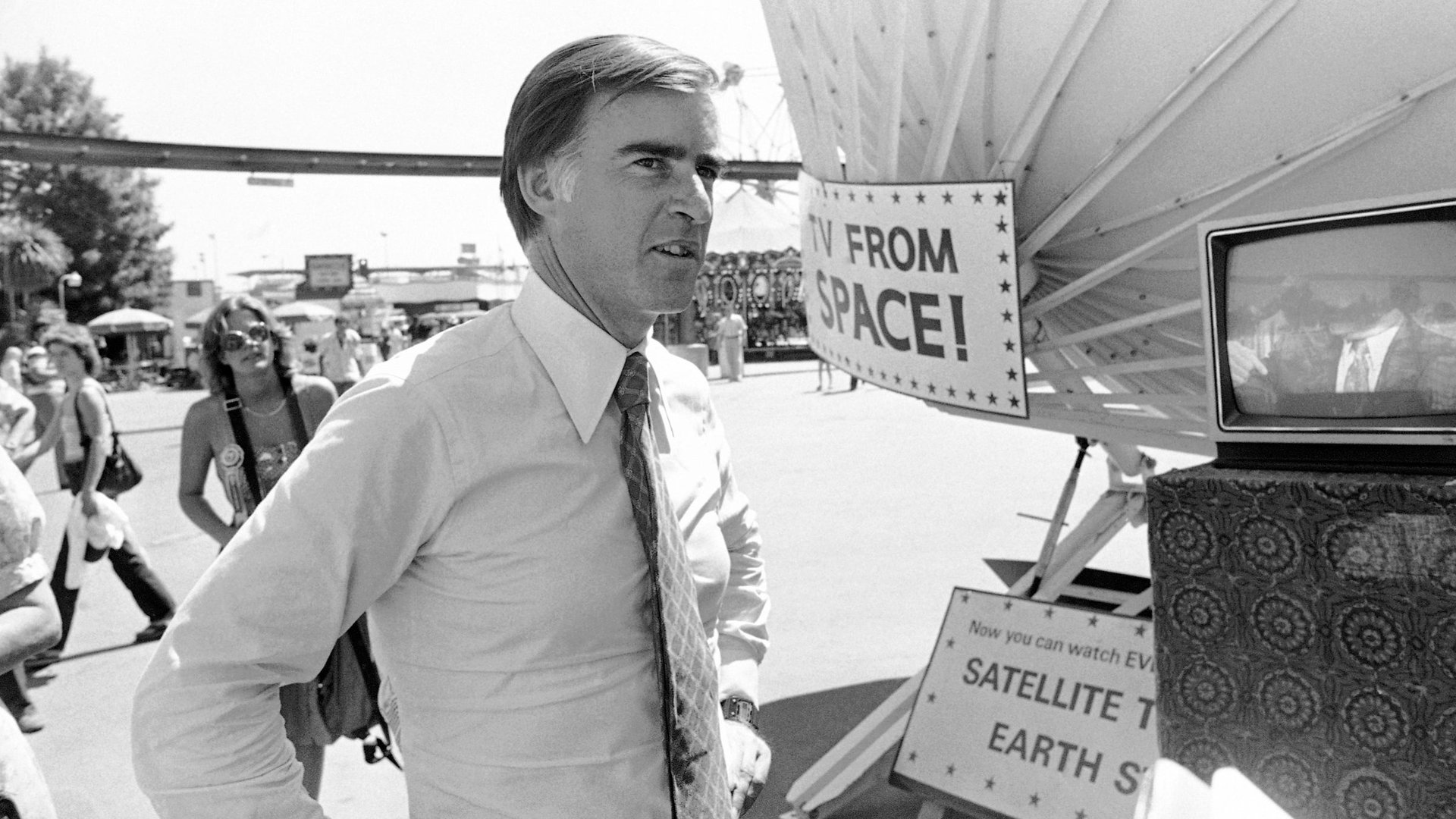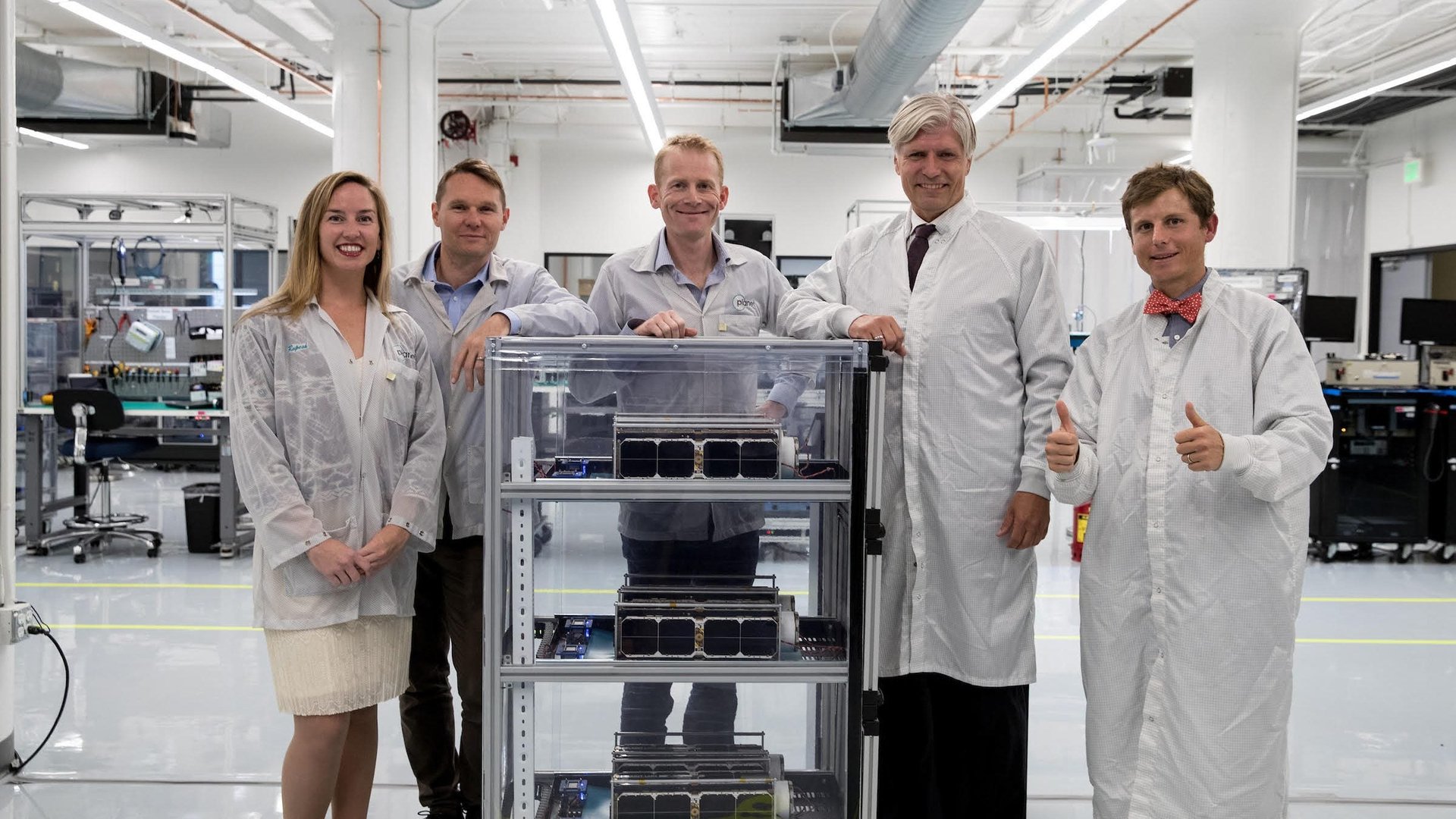California will build its own satellite to fight climate change
The man once known as Governor Moonbeam has announced California’s plan to build its first satellite.


The man once known as Governor Moonbeam has announced California’s plan to build its first satellite.
Outgoing governor Jerry Brown announced plans today to develop and launch a satellite to monitor climate pollutants in his state. San Francisco satellite start-up Planet will build it.
Brown, who served two previous terms as the state’s governor from 1975 to 1983, when he also proposed investments in satellites and space technology.
After taking the office again in 2010, Brown warned in 2016 that if incoming president Donald Trump sought to cut the budget of satellites collecting weather data that is vital to understanding climate science, California would launch space computers of its own. Trump has repeatedly called for the end of DSCOVR, a climate science monitor first championed by former Vice President Al Gore.
DIY satellites
“With science still under attack—we’re under attack by a lot of people, including Donald Trump—and with the climate threat growing, we’re going to launch a satellite—our own damn satellite to figure out where the pollution is and how we’re going to end it,” Brown said at the conclusion of the Global Climate Action Summit today.
California’s satellite will be used by the state’s Air Resources Board to complement existing climate observatories. It is intended to precisely locate the “point source” of the pollutants it observes as they are emitted, presumably allowing them to be controlled more effectively. The largest obstacle to California’s climate goals, however, remains the gas-fueled cars and trucks on its roads.
The data collected by the satellite will be shared with the public through a partnership with the Environmental Defense Fund. The design of the satellite will be financed by the Overlook International Foundation and the Jeremy and Hannelore Grantham Environmental Trust. But no cost figures were shared, and no launch date has been projected.
Still, because the state is working with Planet, it’s possible the project could cost hundreds of thousands of dollars rather than tens of millions or more that traditional earth observation satellites cost.
Partnering with Planet

Planet was founded in 2010 by Will Marshall, Robbie Schingler and Chris Boshuizen, who worked together at NASA’s Ames research facility in Silicon Valley. (Boshuizen is now an entrepreneur in residence at DCVC, a venture fund that is invested in Planet.) The company was designed to exploit the potential of a new generation of low-cost satellites to replicate and exceed the capacity of costly, traditional space projects.
Now, after raising nearly $200 million from venture investors including DCVC and Google, the company operates 150 satellites, the world’s largest private fleet, representing more than 10% of the active satellites in orbit. Each day, it collects imagery of earth’s entire landmass, a mind-boggling amount of data which Planet sells to customers including journalists and hedge funds, agribusiness and governments.
The firm is moving into a new facility that it unveiled on Sept. 11. Sporting a lab coat and a pink polka dot bow tie, vice president of manufacturing Chester Gilmore described how a small group of technicians, using just ten tools, could build and test 40 satellites in a week on his new line, outstripping the previous record of 26. He recalled the company’s early days, when downloading a “blearth”—a blurry picture of earth—from space was a victory compared to “nearth”—no picture of earth at all.
After a recent round of lay-offs, some industry observers worried the company might be facing headwinds. “The wider New Space business is seeing a lot of turmoil for both imaging and communications projects,” warned Tim Farrar, a satellite telecom consultant.
New ways to make money in space
Norway’s climate minister, Ola Elvestuen, attended the Planet’s factory opening, praising the company for developing technology “that is on the ecological and environmental frontline.” But Planet is not a civil space agency, and it will need to leverage data do-gooding into returns.
Planet’s co-founders remain sanguine about the company’s future. A company spokesperson tells Quartz it raised more than $100 million in new capital in May 2018 from a mix of new and old investors. They expect that new machine learning products built into Planet’s online platform will make their data significantly more useful for customers, and it will launch the 14th iteration of its Dove imaging satellite later this year, with significantly improved sensors.
“As a mission-driven commercial company, one of the greatest impacts Planet can make is turning technological breakthroughs and data into tools that benefit the planet while encouraging the growth of business,” co-founder Schingler said in a statement.
But they still need to find repeat customers for all that info. Unique deals like the one announced today, with a sub-national government and private donors contracting to purchase a satellite, could be part of the solution.
This story has been updated with additional information about Planet’s fundraising and to name the company’s third co-founder.